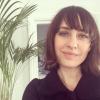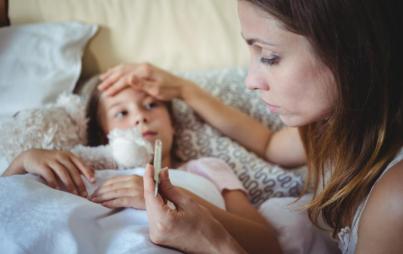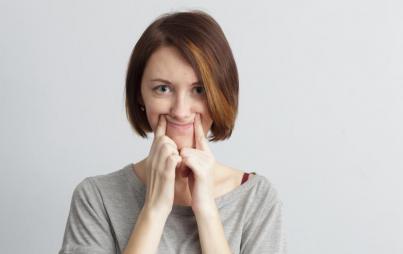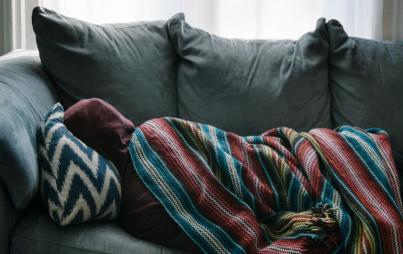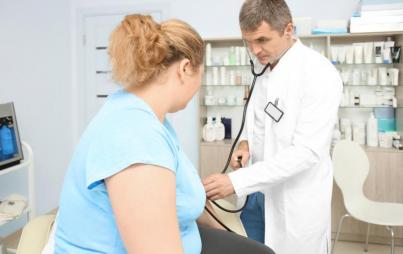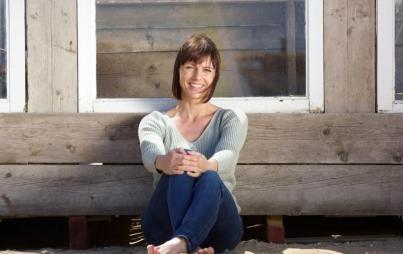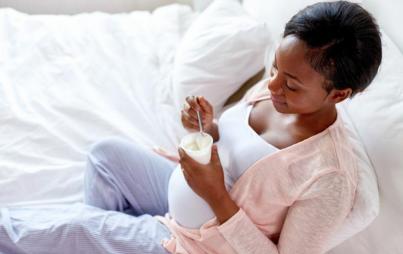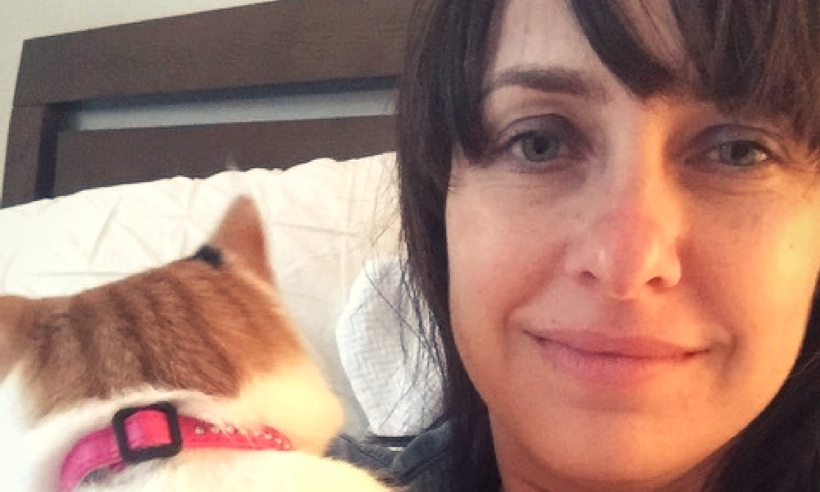
My skin is healing. My breast is healing. My heart is healing.
The same month that my divorce was finalized, I went in for a mammogram. It was the first one I’d ever had; I was barely 40. This was a routine check: there hadn’t been a lump, nor any other symptoms.
I didn’t expect to hear that I had breast cancer.
The shock was visceral and entirely draining. It felt similar to the shock I’d felt the previous year when my husband of seven months unexpectedly exited our fledgling marriage.
In the weeks and months that followed my husband’s departure, I lost lots of things that I used to have — an appetite, clear skin, a heartfelt belief that our marriage would be enduring. When I moved out of our apartment, I went through the motions of setting up my new "home," but my heart was not wholly with me in this endeavor. I’d left my heart in my marital home, wedding photographs beaming from the mantel.
Our ever-purring calico cat, Golda, came with me when I moved across town. Every morning and every evening, she climbed onto my chest and sat on me, the vibration of her purr a kind of healing meditation for my heart.
It had been a year in which I still had my husband’s name, in which I still had some hope that he’d change his mind, in which Golda had been purring on top of my heart every single day. And during that odd year, there had evidently been a small, silent army of intruders in my breast, multiplying, gaining power.
I understood now, implicitly, that life could get surreal, really fast. So I was calm when the doctor told me I had cancer. I remember thinking that I could cope with anything — strength was in me, somehow.
A lumpectomy a few weeks after the diagnosis revealed that the cancer cells were located at the base of my left breast, quite close to my heart. Systems operate in parallel, the body and the mind are linked: Of course, the cancer cells were there, multiplying near my heart. Where else would they be?
My body told the truth, like a map. X marks the spot.
I hadn’t taken many sick days that previous year. I’d been treading water in the deep ocean that is the space between marriage and divorce. It had been a year in which I still had my husband’s name, in which I still had some hope that he’d change his mind, in which Golda had been purring on top of my heart every single day. And during that odd year, there had evidently been a small, silent army of intruders in my breast, multiplying, gaining power.
I’m sure that emotional stress doesn’t cause cancer, a broken heart doesn’t cause cancer, divorce doesn’t cause cancer, but these things don’t help the situation. An older relative told me knowingly that this cancer diagnosis was the last of the toxicity.
When they rolled me into the operating room, and I saw four smiling faces in surgical masks, ready to anesthetize me and cut into my skin, ready to take the cancerous cells out of my breast, I was ready. I wasn’t scared. Just take it out, just make it go away, I thought. Make the hurt go away, had been replaced by make the cancer go away. I was done with grieving the things that had gone wrong; I wanted to move on.
You Might Also Like: 6 Things You Can Do Today To Help Someone With Breast Cancer
After the lumpectomy, my surgeon told me that high grade, fast-growing cancer had been found in not just one, but three places. I would now begin treatment of radiotherapy — my breast would be blasted with radiation to kill any pre-cancerous cells that might still be lurking. Golda wanted to sit on my chest, but the lumpectomy had left my breast too tender for that; she’d have to wait. I missed our daily meditation together.
Because the cancer was in the left breast, I was a candidate for a breathing technique called the ‘Deep Inspiration Breath Hold.’ I was immediately curious what this meant; I thought it sounded rather poetic. I soon learned that during radiotherapy treatment, if I could breathe in and out just the way the radiotherapists would teach me to, and hold my breath for up to twenty seconds each time, my breast would be pushed away from my heart in the process; thus, sparing my heart from radiation.
My heart had been through enough.
I was coached in the breathing technique, pushed through a CAT scan machine, measured with cold metal rulers. Tiny black tattoo marks were imprinted on my chest to show the radiotherapists exactly where to work. My chest was a canvas for their abstract artwork — my breast a kind of connect the dots game that they would play every day for three weeks.
With every shower I took, the non-permanent marker drawings they’d done spread like branches across my breast. The little black tattoo marks remain.
For fifteen consecutive days in September, as the leaves changed color and fell from the trees, I went to the clinic, and I breathed. I took a breath in, and I held my breath until a radiotherapist would tell me to "let your breath out now."
In doing this, I spared that sensitive organ that had survived the trauma of my husband leaving our marriage.
With the power of my breath, like a caped superhero, I pushed my breast away from my beating heart.
The radiotherapy machine is huge, a kind of dystopian friendly giant. It announces itself even in its silence; it takes up most of the room. Inside of this hulking, grey powerhouse, I told myself, were all the rays I needed, all the rays that would banish cancer from my breast and help me to heal.
Every afternoon at 4 pm, we had a date; this beast of a machine and I. Ours was a late afternoon tete a tete, of a strictly healing kind. Same time, same place.
When I was in exactly the right position, when the constellation of dots that had been drawn on my breast aligned just so with the machine’s rays, the lights would dim, the radiotherapists would leave the room, and we were alone.
I lay on the bed, one arm inside my hospital gown, one arm out. It was an easy enough routine: One breast in, one breast out. Stay still. Breathe in deeply and hold. Breathe out. And again. And again. And again.
The machine whirred and beeped around me, sometimes pausing, mid-turn, as if deep in thought. It hovered, edged slowly around me, lingered to the side of me, my naked breast waiting expectantly for that magic moment — the healing rays, and the lingering continuous beep which meant that the machine was delivering treatment.
Breathing in and out and in and out and in and out, and again, please, and again, and hold it, and wait, and now, please, was calming, sometimes even relaxing, a familiar ritual after a long day at work. Lying on that bed each day, I felt a pang in my heart every time I held my breath; this is how I knew I was breathing correctly.
I felt my heart feel every day for three weeks. My heart was still there, healthy and intact; I could feel it.
After a few minutes on one side of my breast, the machine turned itself around and delivered treatment to the other side. Eventually, there would be a clicking sound, which meant that treatment was finished. I could put my left sleeve back inside my hospital gown and hop off the bed, get dressed and go home, make myself some dinner, get some rest before doing it all again the next day.
Some days, treatment took a bit longer. I’d have to be remeasured because my breast contours had changed, just like that, from one day to the next. Just by a few millimeters, but they changed, and more rulers would come out, radiotherapists peering over my chest and calling out numbers to each other. I thought it was amazing that the contours of the breast could change within just a few days.
Internal swelling, likely, the doctors told me.
So much happens silently under our skin, and a few millimeters is everything. A few millimeters away from the heart. A few millimeters away from the lungs. A few millimeters, just push the breast away. I was patient, grateful for their precision, fascinated by the process, by their very exactitude, and by my ever-changing body.
My breast gradually turned a sunburn red, the color of the hearts little children color with Crayola markers. Radiation blasted not only the bad cells, but some healthy ones too: I became tired, but nothing unmanageable.
Friends told me that they thought I was brave to navigate my new diagnosis and subsequent treatment schedule without a partner by my side. I don’t think of myself that way.
Perhaps being brave is just implicit when embarking on scary, unasked for adventures.
Radiotherapy eventually ended, and I got my evenings back. My breast bore little red bumps, like a badly irritated sunburn, for a while, and then they went away.
My skin is healing. My breast is healing. My heart is healing.
Clear breast, healed breast. Cancer free breast.
There’s a scar at the base of my left breast, my take home and keep forever souvenir from the gift shop of the lumpectomy. It’s a bold shade of magenta, a soft curving line, a seam neatly stitched together by my surgeon’s hand.
Golda sits on my chest every day, sometimes three or four times in a single day. I like to place my hand on the part of her fur where I can feel her radiant little heart beating, to watch the rise and fall of her chest as she breathes.

